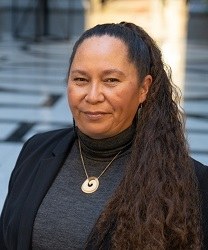2GP decisions released
2GP decisions released
Dunedin (Wednesday, 7 November 2018) – Decisions that set the scene for the development of Dunedin over the next decade have been released.
The Dunedin City Council today released the decision version of the Proposed Second Generation Dunedin City District Plan (2GP), which has a new set of rules for what you can do on your land and how it can be developed.
Now the decisions are out, both the new 2GP rules and the current District Plan rules will apply until any appeals are resolved.
Mayor of Dunedin Dave Cull says the main goal of the 2GP is to sustainably manage the city’s natural and physical resources to meet the needs of current and future generations.
“We want to protect the special features and amenities that residents value, while encouraging development in appropriate places. The 2GP gives greater clarity and certainty about what activities and development can be carried out and where that can happen.”
The decisions are the culmination of more than six years’ work. Following a three year review, that involved two stages of public consultation on issues, strategic directions and options, the 2GP was released for formal submissions in September 2015. It received 1055 submissions and 452 further submissions. The submissions were considered by a panel of six commissioners during hearings which ran from May 2016 to December 2017.
The 2GP Hearings Panel made the decisions on the 2GP on behalf of the DCC. Now the decisions have been released, the panel has been disbanded.
Mr Cull says, “I thank the panel for their dedication and professionalism. We are grateful to all the panel members for their commitment to what has been a very important and demanding process.”
Panel Chair David Collins says, “The panel felt a great responsibility to make the best decisions we could. These decisions will have significant effects on the ability of people and communities in the DCC to use natural and built resources to meet their needs, now and in the future.
“It has been obvious, particularly with the more controversial 2GP provisions, that there is usually no solution that will satisfy everyone. We can only take into account information put in front of us and weigh up the different perspectives. It is not a matter of finding a technically ‘correct’ decision.”
The panel has produced 29 decision reports, which outline their decisions and the reasons for them.
DCC Planning and Environment Committee Chair Cr David Benson-Pope, who was also a panel member, says any submitter who is not satisfied with the decision on their submission has the right to appeal to the Environment Court.
How long it takes to fully replace the current District Plan depends on the number and nature of appeals. If there are no appeals, the changes will come into force.
DCC City Development Manager Dr Anna
Johnson says several briefings on the 2GP are being held.
These include targeted briefings for professionals such as
architects and surveyors, and for property investors and
real estate representatives.
There will also be a public briefing which anyone can attend, to be held on Monday, 12 November, 5pm to 6pm, in the Dunedin Public Art Gallery conference room.
The briefings will cover what has changed between the current plan and the 2GP and give people a chance to ask DCC planners questions about the new rules and how they may affect their properties.
The 2GP, which has about 1600 pages of rules, policies and supporting information, has been prepared as an electronic plan. The decisions and a marked-up version of the plan showing the changes can be viewed online at www.2gp.dunedin.govt.nz.
A summary of some key changes between the
current plan and the 2GP
• A new strategic
directions section that sets out key issues for the city,
‘big picture’ outcomes to be achieved and sets up the
plan’s zoning and other methods.
• Having more land
available for housing. The 2GP has rezoned an extra 190ha
for residential use, of which about 100ha is able to be
developed, allowing for up to 1200 new homes. An additional
132ha has a residential transitional overlay zone, which
means these areas are earmarked for housing development, if
required, once certain criteria are met, mainly around
access to infrastructure such as water and wastewater pipes
and roads.
• Making it easier to build family flats in
most zones to provide more housing options for extended
families, particularly in response to an ageing population.
New provisions for family flats in rural areas make it
easier to house family and farm workers.
• Including new medium density areas where homes can be built on smaller sites. Some of these new areas will only be available for increased development once essential infrastructure is in place.
• Changes to fence height rules along boundaries with roads and reserves to improve safety and maintain amenity values. For half the length of each boundary, it must be possible to see through or over the fence if it is above 1.4m high.
• In some cases on-site car parking requirements for residential properties and other activities have been reduced so people have more choice over how much car parking they provide on site.
• Allowing garages and carports to be built in the front yards of houses, subject to certain standards, rather than always requiring a resource consent.
• Encouraging
the re-use of heritage buildings by making it easier to
carry out earthquake strengthening and make appropriate
additions and alterations.
• Changes to the zones within the central city, including changes to provide for the Dunedin Hospital rebuild.
• Changes to rules in the harbourside area to provide more flexibility for development to occur there.
• New rules to enable smaller events to
be held, and many public amenities to be built, without the
need for resource
consent.
• New
rules requiring buildings and some structures to be set back
from the coast and other bodies of water.
• Managing
rural land better by splitting the current rural zone into
seven new rural zones. An increase in the minimum site size
for subdivision will apply in all rural zones and there is
also an increase in the minimum site size for new homes in
five out of the seven new rural zones. This is to help
retain productive rural land.
• Providing for a wider
range of activities in rural zones, such as rural industry
and rural research and tourism.
• Changes to the extent
of landscape managements areas (adjustments in some areas,
some new areas and some removed). A new type of overlay zone
(coastal character) has been introduced to protect the
natural character of coastal areas.
• A different
approach to managing development for landscape overlay
areas. Small buildings or structures (up to 60m2) can be
built without resource consent subject to controls on
height, reflectivity and where they are in relation to other
buildings/structures.
• New hazard management areas
have been included, where development will be better managed
to protect people and property from natural hazard events.
Some of the more controversial provisions around land
instability areas, which were in the notified version of the
2GP, have been removed.
• New rules to better provide for renewable energy generation. This includes allowing small scale generation without resource consent, as long as certain standards are met.
• Stricter rules stricter for mining in areas with outstanding natural features and landscapes. This includes prohibiting new mining on Saddle Hill.
Please note: The 2GP decisions summarised
above are still subject to
appeal.
ends


 Gordon Campbell: On bird flu, AUKUS entry fees and Cindy Lee
Gordon Campbell: On bird flu, AUKUS entry fees and Cindy Lee Family First: Just 1 In 6 Oppose ‘Three Strikes’ - Poll
Family First: Just 1 In 6 Oppose ‘Three Strikes’ - Poll Labour Party: Budget Blunder Shows Nicola Willis Could Cut Recovery Funding
Labour Party: Budget Blunder Shows Nicola Willis Could Cut Recovery Funding  Government: Urgent Changes To System Through First RMA Amendment Bill
Government: Urgent Changes To System Through First RMA Amendment Bill Peace Movement Aotearoa: Global Military Spending Increase Threatens Humanity And The Planet
Peace Movement Aotearoa: Global Military Spending Increase Threatens Humanity And The Planet Government: To Introduce Revised Three Strikes Law
Government: To Introduce Revised Three Strikes Law Labour Party: Environmental Protection Vital, Not ‘Onerous’
Labour Party: Environmental Protection Vital, Not ‘Onerous’


